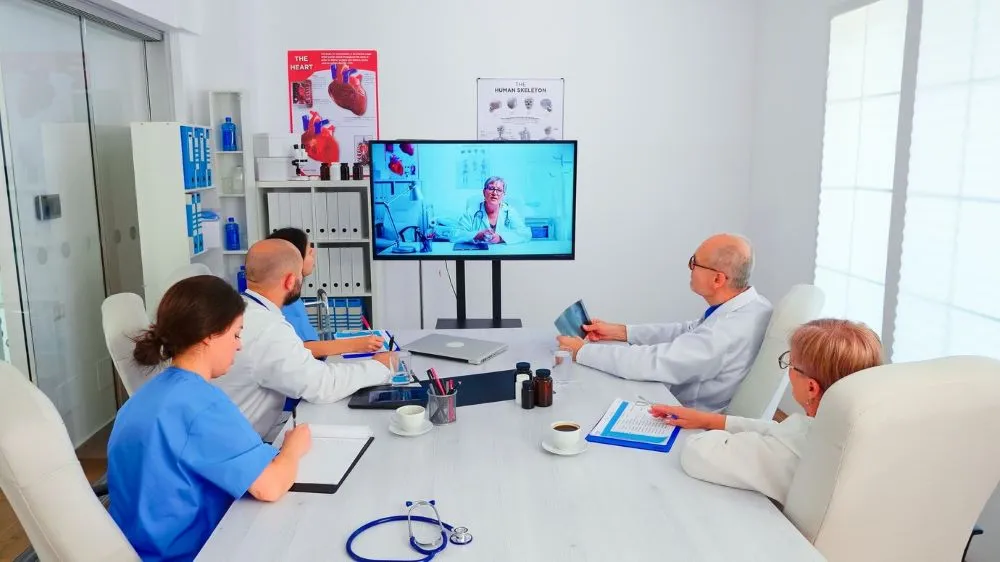Are you looking for an ideal clinically integrated network to enhance your patient care? This blog is the right place as it covers CINs in detail. We will also assess how hospitals can integrate CINs with their services. This blog lays out their importance and reasons for doctors to help them. There was also a mention of the reasons for new entities to join these CINs.
Overview Of A Clinically Integrated Network
A clinically integrated network (CIN) is a collaborative venture between healthcare providers. They include doctors, hospital administrations, and specialists. These parties work closely to improve patient care. They share medical information with each other and follow set guidelines.
These practices ensure that their patients receive high-quality and coordinated care. A clinically integrated network is not owned by a single entity. It joins independent healthcare providers together. As part of a CIN, doctors and hospitals work as a team.

The aim of a CIN model is to provide patient-centered care. It ensures that every patient receives the right care at the right time. A dense network of healthcare professionals dedicated to working together makes this possible.
Why Are Clinically Integrated Networks Important?
Clinically integrated networks are important due to their multiple features. Their features include enhanced coordination and improved quality of care.
These networks are also important due to their cost efficiency and resource utilization. Their data sharing and analytics features, along with value-based care models, are also important.
1. Enhanced Coordination
Clinically integrated networks are important because they increase coordination between doctors and hospitals. They can work together better with CINs. Enhanced coordination means that you can discuss and plan your treatment better with the hospital.
Patients do not have to repeat their medical history to every doctor. CINs help connect those dots so that you can provide smooth and organized care. CINs reduce confusion and mix-ups between patients and clinics. Your healthcare team can talk and act as one.
CINs make sure that you provide the best care without any hiccups. You can use these networks to be on the same page as your medical staff.
2. Improved Quality of Care
Clinically integrated networks also provide a better quality of care to your patients. They enable you to use the best ways to help you feel better. You can work through the ideal steps of CINs and stick to them.
CINs provide a basic layout of top-quality patient care in the form of a recipe. You can follow their medical recipe to provide the best care possible. CINs are mostly based on proven methods that you can fully rely on.
Doctors and hospitals can ensure that they are providing top-notch care. All entities are also on the same page. You can make your patients feel better and stay healthy.
3. Cost Efficiency and Resource Utilization
CINs matter to you as they save money and wisely use the resources of hospitals. They also do not waste time or money on irrelevant medical practices.
Doctors and hospitals do not have to repeat tests as they work together. They also do not spend too much on treatments. Since you and hospitals work together, you have to value the money of your patients. You should only provide specific treatments that help those patients the most.
CINs also enable you to smartly share resources. They can also make healthcare work better for every patient. They act as efficient money managers. CINs ensure that your patients do not have to endure stress.
They can even try getting the best care without unnecessary spending. These practices significantly make healthcare efficient and cost-effective.
4. Reporting and Analytics
You can use clinically integrated networks to smartly share information with other entities. CINs also provide facts through reporting and analytics. Their data sharing and analytics feature smoothly relays health information between doctors and hospitals.
Each entity has the same notes about patients. These notes contain all the important details and do not miss anything. Specific software analyzes this information and finds ways to keep patients healthy. You can work with hospitals to identify which treatment works best for patients.
CINs clarify the medical histories of patients. They use that data to provide the best care possible. They tailor-make healthcare just for your patients based on their demographic entries.
Why Would Someone Join A Clinically Integrated Network?
CIN members are committed to achieving the Triple Aim set by the Institute for Healthcare Improvement. Clinically integrated networks improve the health of populations. They reduce the cost of healthcare. You can also use them to improve your patient care experience.
CINs can prove their efforts to achieve these three aims. Their health systems and providers can provide quality care at lower costs. This way, CIN members can receive better reimbursement rates from insurance companies.

Furthermore, CINs prioritize mutual accountability to deliver high-quality patient care. They also keep you independent while working with top medical experts.
Benefits Of Clinically Integrated Networks
Clinically integrated networks are beneficial for doctors and hospitals in various fields. They can handle most of your annual requirements. You can also use them for your primary care referral sources.
Moreover, they can manage an additional volume of patients. CINs can also provide the infrastructure for you to progress to value-based contracts.
1. Handling Annual Requirements
CINs can handle most of your annual requirements. These requirements are related to the Medicare Access and CHIP Reauthorization Act of 2015. You are only responsible for advancing care information in the performance category.
2. Primary Care Referral Sources
Many insurers prefer multi-specialty CINs. They enable you to add and protect your primary care referral sources. CINs also provide opportunities for doctors to participate in shared savings. These opportunities are care episodes specifically for the specialists in a network.
3. Managing Additional Patient Volume
You can also share your urgent-care centers and after-hour clinics in CINs. Hospitals can make evening and weekend hours available to their patients. These practices enable non-physician providers to manage an additional volume of patients.
4. Value-based Contracts
CINs also benefit doctors to progress from volume to value-based contracts. They provide the necessary infrastructure for this upgrade. The infrastructure includes clinical leadership, medical governance, and care management support. These features can manage patient demand in a better way.
How Is A CIN Different From An Accountable Care Organization (ACO)?
A CIN is different from an ACO in several regards. Its scope and structure have different aspects than that of an ACO. CINs also focus more on collaboration, and ACOs prioritize financial accountability.
The governance and ownership structure of CINs and ACOs also varies a lot. Their payment posting models are also based on contrasting characteristics.
1. Scope and Structure
Their scopes and structures are vastly different from each other. CINs are mostly local collaborations.
They bring together multiple healthcare providers from a limited area to enhance coordination. A CIN is also flexible and enables coordination between various kinds of providers.
Whereas ACOs have a broader scope in terms of their operations. They cover doctors and hospitals in a larger and more formal structure. They are also likely to have a centralized governance setup.
ACOs can be held accountable for specific patient populations. These populations should frequently possess more defined organizational roles. CINs act as local teams, and ACOs consist of broader groups.
2. Collaboration and Financial Accountability
The priorities of clinically integrated networks and accountable care organizations are different. CINs focus more on collaboration between doctors and hospitals. They aim to improve patient coordination and care.
You can use them to work together and enhance your healthcare experience. In contrast, ACOs focus more on the financial accountability of hospitals. They specialize in handling the quality of care and costs.
You can use them through shared savings and risk-based models. CINs are often involved in increasing teamwork opportunities.
Whereas ACOs mostly oversee the financial processes of hospitals. ACOs hold doctors and hospitals accountable for their costs of providing quality care. And CINs enable you to work together as healthcare providers.
3. Governance and Ownership
CINs and ACOs also differ a lot in terms of their governance and ownership. CINs are usually based on a decentralized setup.
Their ownership and decision-making are spread among its specific healthcare entities. CINs work on a shared effort where each entity has a say in their collaboration. In contrast, ACOs are dedicated to a more centralized governance structure.
A designated entity takes on bigger clinical and financial responsibilities. ACOs have a central hub with the authority to guide the entire system. Whereas CINs work according to shared leadership within teams.
4. Payment Models
The payment models of clinically integrated networks and accountable care organizations differ from each other. You can use various payment setups when working with CINs. These networks provide fees to you. The fees cover your services along with some added performance rewards.
CINs reward good teamwork with extra earnings. In contrast, you have to engage in risk-based models or shared savings with ACOs. You have to meet specific quality and cost targets. The completion of these targets earns you either incentives or penalties.
ACOs present specific financial plans. Their entities equally benefit and face consequences from those plans. CINs provide earning bonuses to you for effectively providing patient care. In contrast, ACOs share financial goals as a team.
How Do We Collaborate With Organizations To Build CINs?
You can collaborate with organizations through a team effort. Such collaborations can efficiently build clinically integrated networks. The initial phase involves gathering local doctors and hospitals to form a network.
Each entity has to be on board. They should also share the goal of enhancing patient care. These collaborations make your healthcare work better for the patients. You must also encourage open communication.
Doctors and hospitals can share their ideas and experiences with each other. They can create standardized processes to improve care coordination. An open dialogue is important for the success of your clinically integrated networks.
Clinically Integrated Network Structure and Governance
The Federal Trade Commission (FTC) has put forward some expectations. They are based on the governance and structure of clinically integrated networks. According to those expectations, you should participate in developing and operating CINs.
The executives of health systems can also discuss the governance of CINs. Their CINs usually have dedicated governing boards. They can also be in the process of developing one. The board membership of such executives is based on several factors.
Those factors mostly include equity ownership and representation of physicians in CINs. Representation of administrators is also important for the structure of clinically integrated networks. Their characteristics directly highlight the compliance of those executives.
Is A Clinically Integrated Network Right For Your Private Practice?
Selecting a clinically integrated network is an important decision for your private practice. An ideal CIN can link you with other doctors.
This linkage improves patient care coordination. You have to initially assess the size of your private practice. You will benefit more if you have a large practice. CINs enable streamlined communication between doctors and patients.
You must factor in your financial measures, including membership fees. Such measures can be used to calculate the ROI of your private practice. Private hospitals can lastly analyze local partnerships to see if their CINs are productive.
They should also check the collaborations of those CINs. A CIN usually collaborates with its preferred hospitals to increase its efficiency. You can work with it to improve practicality against size and costs.
Moreover, unlock the future of dental practice management with our cutting-edge solutions. Optimize billing processes for efficient operations.
The Bottom Line
This blog assessed the importance of clinically integrated networks for doctors and hospitals. We looked at its role in providing top-quality patient care through medical collaborations. Furthermore, we also analyzed how you can integrate your practices with CINs.
The professional team at Health Quest Billing is experienced in working with CINs. Contact us to find out how their usage can optimize your patient care.







 10 mint read
10 mint read